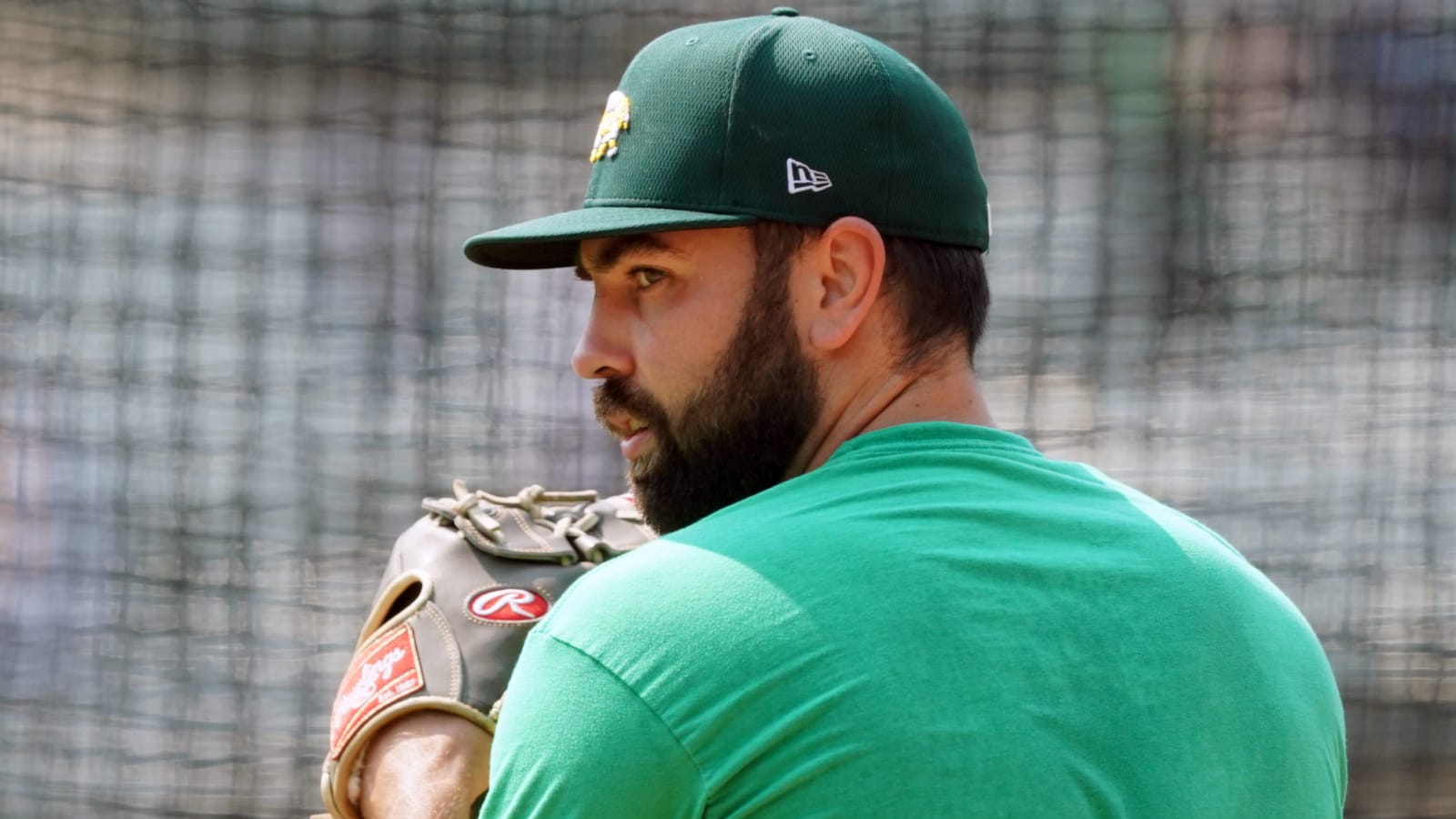
A series of pre-lockout reports suggested there could be a broad sell-off coming in Oakland. Barring the introduction of a fairly high salary floor in the next collective bargaining agreement, the A’s seem likely to move some of their costlier players in an effort to trim payroll.
That sell-off has yet to begin, as the trade market didn’t pick up a ton of steam before the transactions freeze. It’s generally expected that the A’s could be among the most active teams coming out of the lockout, with their pair of star infielders (Matt Olson and Matt Chapman) and trio of starters with dwindling club control (Chris Bassitt, Sean Manaea and Frankie Montas) drawing plenty of attention from rival fanbases. Bullpen-needy teams could also look to Oakland, in particular to closer Lou Trivino.
A former 11th-round pick, Trivino has been a bullpen workhorse since making his major league debut in 2018. He’s never required an injured list stint and has eclipsed 60 innings in each of the last three full seasons. Despite taking on significant workloads, Trivino has been consistently effective, working to a sub-4.00 ERA in three of his four campaigns. Going back to the start of 2020, he owns a 3.34 mark over 97 frames, holding opponents to a .211/.305/.313 slash line.
ERA estimators haven’t quite been as bullish as those strong results. While he posted plus strikeout and swing-and-miss numbers early in his career, both have ticked down in recent seasons. His 21.6% strikeout percentage last year was more than two points lower than average for relievers, while his 10.2% swinging strike rate fell below the league mark for the first season of his career. And Trivino has never had great control, walking batters at a 10% clip or greater each season.
In large part due to that unspectacular strikeout and walk profile, both SIERA and FIP have pegged him closer to a high-3.00’s ERA type. He’s benefitted from a rather low opponents’ batting average on balls in play, no doubt in part due to the strong defenses the A’s run out behind him. Yet Trivino has also done his part to avoid especially damaging contact, particularly when put in favorable situations.
In each of his four seasons, the righty’s average exit velocity allowed has been a touch lower than the league mark. His performance becomes more notable when isolating Trivino’s performance against same-handed batters. Righties have an 86.1 MPH average exit velocity against him over the past two years, a mark that’s among the bottom quarter of pitchers leaguewide (minimum 500 offerings). Thanks in large part to that contact suppression, the Pennsylvania native has dominated righty hitters. Since the start of 2020, they’ve mustered only a .169/.261/.232 line against him. Trivino’s strikeout rate against righties is a solid 24.9%, and he’s induced ground-balls at a strong 47% clip.
As one might guess, he’s been far less effective against opposite-handed hitters. Lefties are hitting .271/.367/.431 against Trivino in that time. His 20.5% strikeout percentage and 88.5 MPH average exit velocity when at a platoon disadvantage are well worse than his numbers against righties. His walk rate has a similar discrepancy. With the platoon advantage, it’s a manageable 9.3%; against left-handers, he’s walked an untenable 13.3% of opponents.
Those platoon splits probably make him an imperfect fit for a defined closer’s role, particularly in a less pitcher-friendly park than Oakland’s Coliseum and/or in front of a lesser defense. Trivino could be a highly valuable situational option, though, a weapon for a manager to call on against lineups’ top right-handed bats. The three-batter minimum makes it impossible to shield him from lefties entirely, yet an acquiring club could at least mitigate his platoon troubles by avoiding using him against opponents’ best left-handed hitters when possible.
Trivino wouldn’t be as impactful a pickup as any of Oakland’s position player or rotation stalwarts. He’s a good reliever with a particularly strong skill for handling righty bats, though. With essentially every contender on the hunt for bullpen help, he should draw interest coming out of the lockout, and it stands to reason the A’s would be amenable to moving him.
While Trivino’s $2.9M projected arbitration salary isn’t onerous, he’s already 30 years old and down to his final three years of club control. The A’s aren’t likely to go into a full rebuild, but even if they’re only entertaining a one or two-year step back, Trivino should be available. His arbitration salaries will continue to rise over the coming seasons, particularly if he remains in the closer’s role in Oakland and accumulates a number of saves.
Barring a dominant 2022 showing, his trade value probably won’t increase over the coming months. Even if the A’s were to retool quickly and have a contending roster in place again by 2023 or 2024, Trivino’s arbitration price by that point may be too high for their liking. He probably won’t be the first player moved out of Oakland and certainly won’t grab the most headlines, but Trivino looks like a strong trade candidate whenever teams are permitted to again discuss MLB deals.
More must-reads:
- Yankees considering Matt Chapman in effort to address shortstop position?
- Who are the top second basemen still available in free agency?
- The '1989 Oakland Athletics' quiz
Breaking News
Customize Your Newsletter
 +
+
Get the latest news and rumors, customized to your favorite sports and teams. Emailed daily. Always free!

